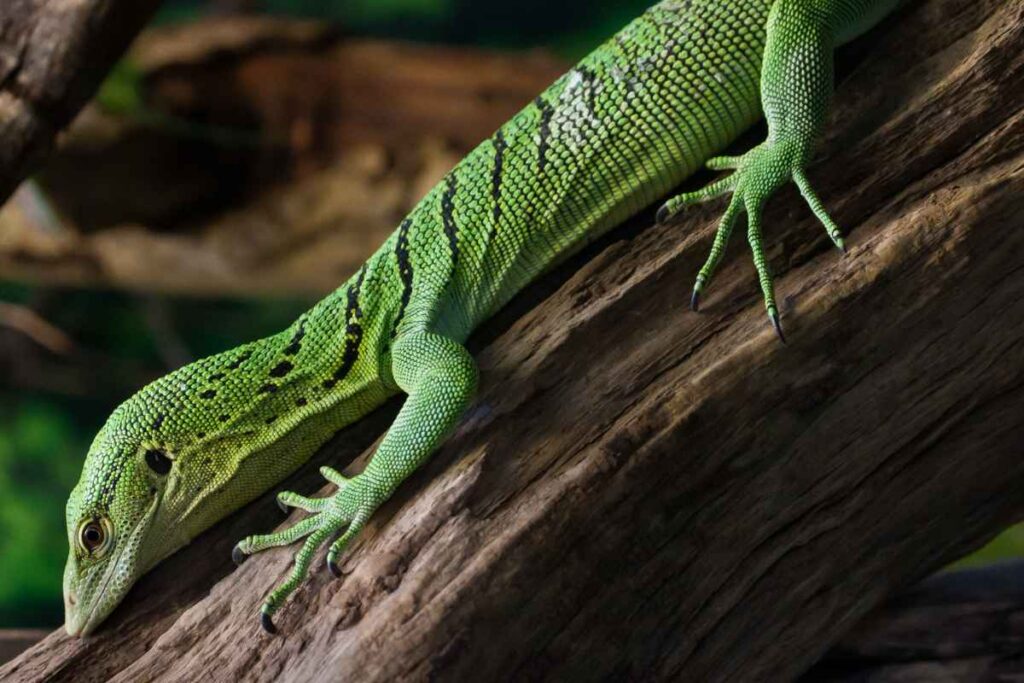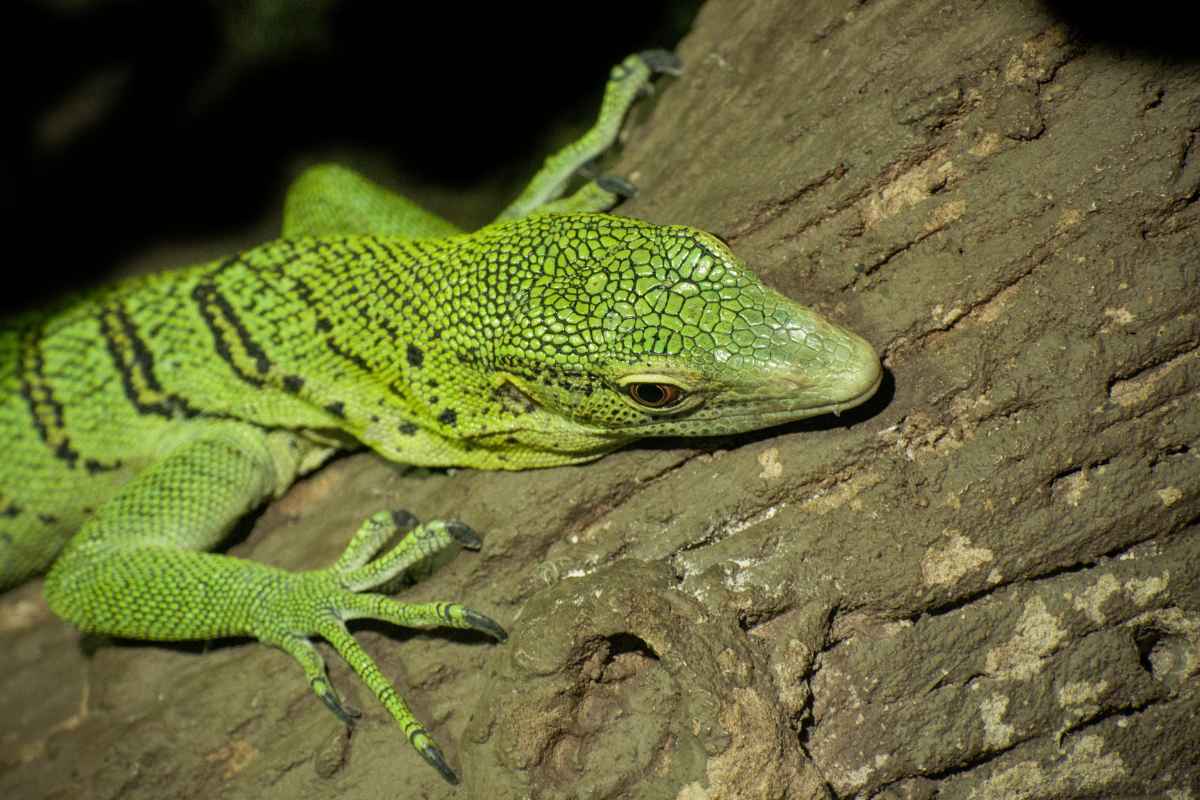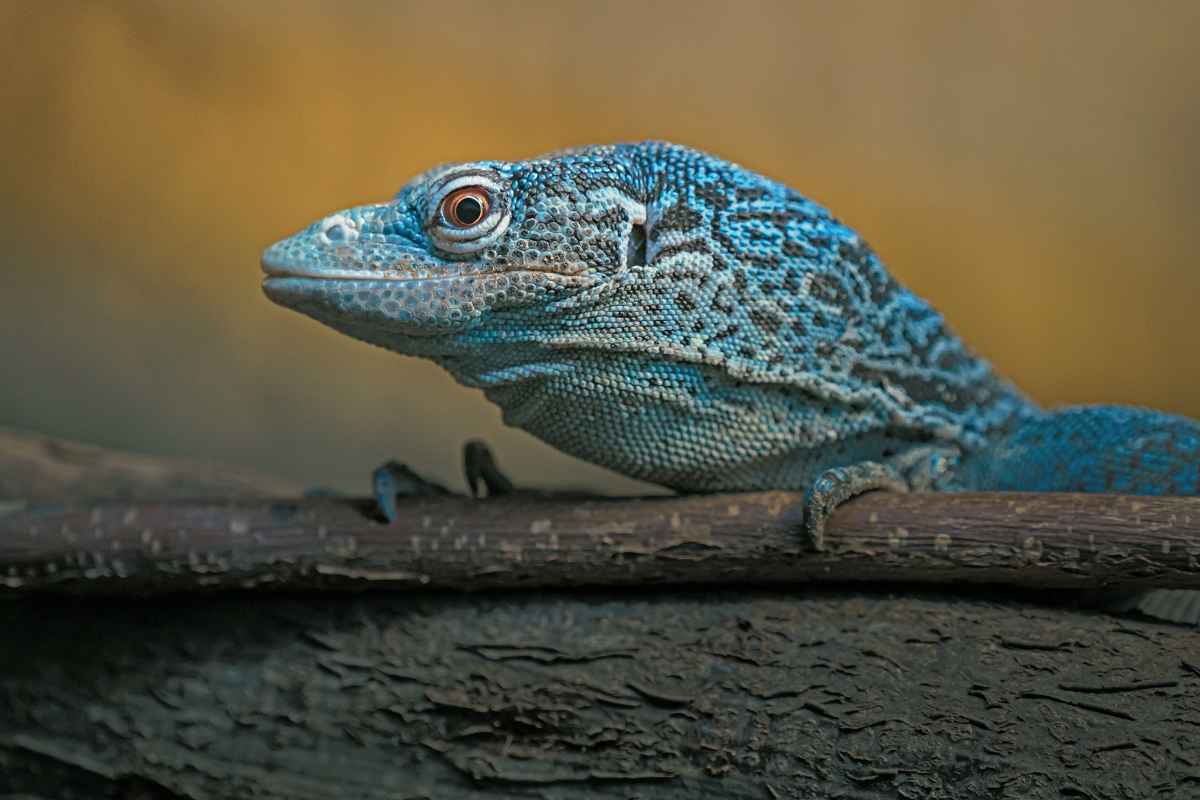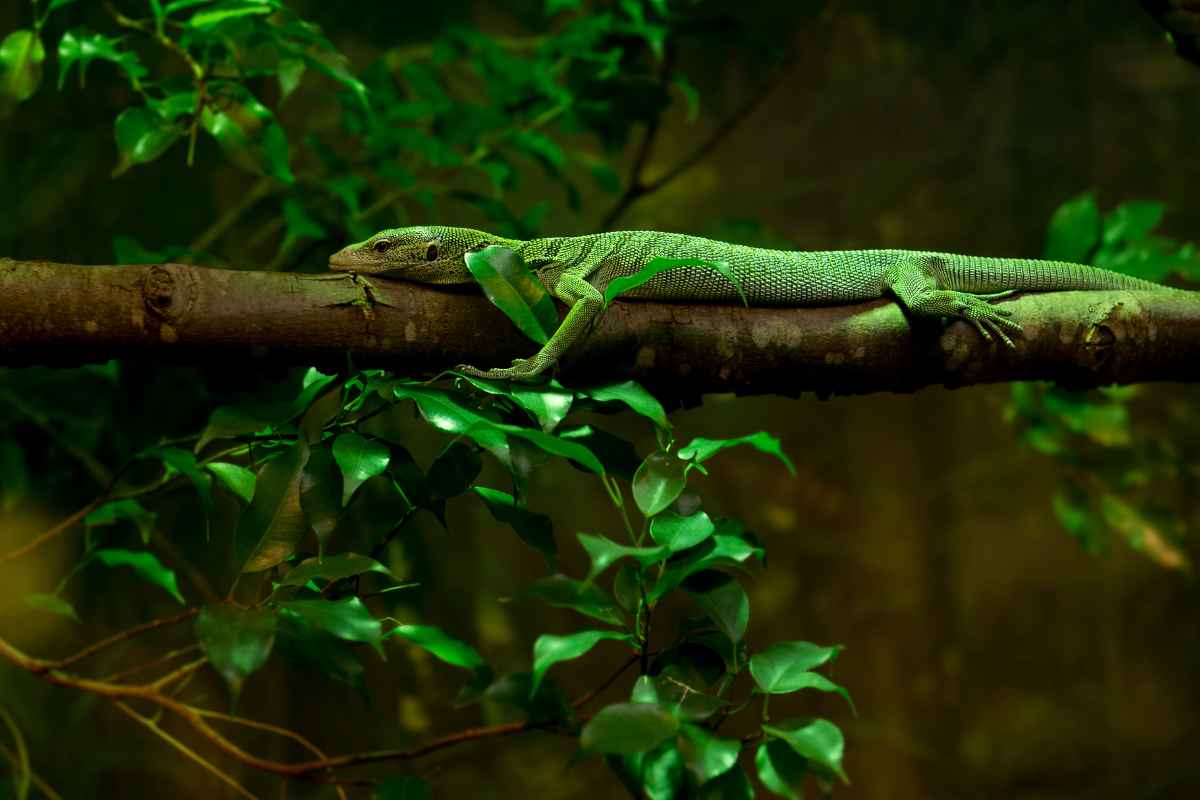Green Tree Monitors: Behavior and Feeding

Green Tree Monitors (Varanus prasinus) are among the most fascinating reptiles in the world. With their vibrant green coloration, slender bodies, and remarkable intelligence, these arboreal lizards capture the attention of reptile enthusiasts and researchers alike.
Native to the rainforests of New Guinea and nearby islands, they thrive in humid, lush environments filled with trees and dense foliage.
Understanding their behavior and feeding habits is essential for providing proper care and appreciating how these reptiles live in the wild.
Physical Characteristics and Adaptations
The Green Tree Monitor stands out for its emerald-green scales, long prehensile tail, and agile limbs. Adults typically measure between 90 to 100 centimeters (3 to 3.5 feet), with more than half of their length being tail.
This prehensile tail acts as an anchor, allowing them to balance and move gracefully through branches. Their sharp claws and elongated toes give them excellent grip, while their keen eyesight helps them detect movement and locate prey from a distance.
Unlike many other monitors, Green Tree Monitors are lightweight and slender, an adaptation that makes them perfect climbers. Their smooth scales reduce friction, allowing them to move quietly through the trees — an essential skill for both hunting and avoiding predators.

Natural Behavior and Temperament
Arboreal Lifestyle
As their name suggests, Green Tree Monitors spend most of their lives in the trees. They are highly arboreal, preferring the upper canopy where they can bask in filtered sunlight and find abundant food.
Rarely descending to the ground, they navigate branches with agility, often leaping between them using their tails for balance.
These monitors are also territorial animals. In the wild, males establish specific areas that they defend from rivals. However, in captivity, maintaining multiple monitors together can lead to stress and aggression unless the enclosure is large enough and carefully managed.
Intelligence and Social Behavior
One of the most striking traits of this species is its intelligence. Green Tree Monitors show problem-solving abilities uncommon in many reptiles. They can recognize patterns, learn feeding routines, and even identify their keepers over time.
While generally shy at first, with patient handling they often become curious and tolerant of human presence.
Although not social in the sense of forming groups, they show complex communication through body posture and movement. A raised body or inflated throat can signal dominance or defense, while tail flicks and head bobs convey other forms of intent.

Observing these behaviors gives insight into their cognitive depth and adaptability.
Feeding Habits in the Wild
Opportunistic Carnivores
In their natural habitat, Green Tree Monitors are opportunistic carnivores, feeding on a variety of small animals. Their diet includes insects, spiders, frogs, small mammals, and bird eggs.
They use stealth and precision to ambush prey, striking quickly and swallowing it whole. Their long, sticky tongues help them capture smaller insects with ease, while their sharp teeth allow them to tear larger prey.
Unlike ground-dwelling species, their arboreal nature limits access to larger prey, so they rely heavily on what’s available in the canopy.
Seasonal changes also affect their diet — during wetter months, insects are abundant, while in drier periods, they may hunt small vertebrates more frequently.
Hunting Techniques
Green Tree Monitors display remarkable hunting strategies. They are active foragers, often seen exploring branches with deliberate movements, tasting the air with their tongues to detect scents.

Once prey is located, they strike swiftly, using their agility to chase or trap it against the bark. Their coordination and speed make them efficient predators in their vertical world.
Interestingly, observations suggest they sometimes manipulate objects or prey items in ways that show a degree of problem-solving, further supporting their reputation as one of the most intelligent lizards in existence.
Feeding in Captivity
Balanced Diet
In captivity, replicating their natural diet is vital for their health. A well-balanced feeding plan includes gut-loaded crickets, roaches, grasshoppers, mealworms, and the occasional pinkie mouse or quail egg.
Offering a variety of insects not only keeps them nutritionally balanced but also stimulates natural hunting instincts.
Dusting insects with calcium and vitamin supplements is crucial, especially for young or breeding individuals. Because Green Tree Monitors are energetic and fast-metabolizing, they should be fed several times a week, depending on age and activity level.
Younger monitors often need daily feedings, while adults can be maintained on a schedule of three to four times per week.
Feeding Behavior in Enclosures

Feeding time provides an excellent opportunity to observe their natural behavior. These monitors often hunt their prey with enthusiasm, stalking and pouncing in a way that mirrors their wild instincts.
Many keepers report that offering live prey or using feeding tongs to simulate movement helps keep the monitor mentally stimulated. This form of enrichment reduces stress and prevents boredom.
It’s also important to monitor their body condition. Overfeeding fatty foods such as rodents can lead to obesity and liver issues, so moderation is key. A primarily insect-based diet, supplemented occasionally with vertebrate prey, keeps them healthy and active.
Creating the Right Feeding Environment
For a Green Tree Monitor, the feeding environment plays a significant role in their overall well-being. They thrive in tall enclosures filled with climbing branches, vines, and natural hiding spots.
Temperature and humidity must be carefully maintained — basking spots around 90°F (32°C) and humidity levels between 70–90% mimic their rainforest habitat.
Feeding should ideally occur during the daytime, when they are most active. Some individuals prefer eating in privacy, while others will eat comfortably with an audience once accustomed to their surroundings.
Observing these preferences helps build trust and strengthens the bond between keeper and animal.

Health and Nutritional Considerations
Maintaining a proper diet ensures strong bones, vibrant coloration, and overall vitality. Calcium deficiency can lead to metabolic bone disease (MBD), a common issue in reptiles that don’t receive adequate UVB exposure or supplementation.
Providing UVB lighting or access to natural sunlight is crucial to allow proper calcium absorption.
Signs of malnutrition or stress include lethargy, poor appetite, dull skin, and irregular shedding. Regular monitoring and prompt adjustments to diet or environment can prevent long-term health issues.
Because of their high metabolism, dehydration can also occur if humidity levels drop too low. Frequent misting and access to fresh, clean water are essential components of their care routine.
The Joy of Observing Green Tree Monitors
Watching a Green Tree Monitor explore, hunt, and interact with its surroundings is a captivating experience. Each individual displays unique quirks — some are bold and curious, while others remain cautious and deliberate.
Their combination of beauty, intelligence, and agility makes them one of the most rewarding reptiles to observe and care for.
For dedicated reptile enthusiasts, providing a proper environment and diet allows these magnificent lizards to thrive in captivity, displaying their natural behaviors in full color and vitality.
Understanding their needs deepens our appreciation for these elegant creatures of the canopy and highlights the remarkable diversity of reptilian life on Earth.
Enjoy This Video About Reptiles

Source: Clint's Reptiles
Did you find this post useful or inspiring? Save THIS PIN to your Pets Board on Pinterest! 😊


You may also like